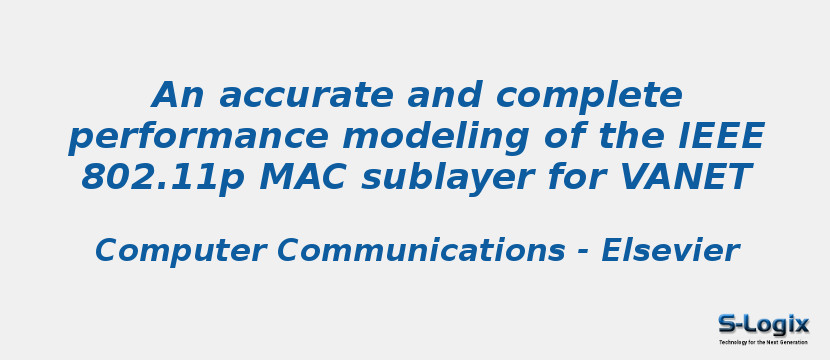Research Area: Vehicular Ad Hoc Networks
This paper proposes an analytical model for the throughput, channel access delay, and queueing delay of the IEEE 802.11p enhanced distributed channel access (EDCA) mechanism in the medium-access control (MAC) sublayer. In order to make the proposed analytical model explicitly solvable and to avoid computation complexity caused by most of existing 3-D or 4-D Markov-chain-based analytical models, a combination of 2-D and 1-D Markov chain model is used. The 2-D Markov chain is established to model the backoff procedure of each access category (AC) queue, deriving a relationship between the transmission probability and collision probability for each AC queue. Afterwards, a 1-D discrete-time Markov chain is established to model the contention period caused by the distinction of four different arbitration inter-frame space (AIFS) and contention window (CW) values, deriving another relationship between the transmission probability and collision probability of each AC queue. In order to consider both saturated and non-saturated cases, an infinite-long 1-D Markov chain model is used. In the proposed analytical model, all the features in the EDCA such as different CW and AIFS for each AC, various saturation status, internal collision, backoff counter freezing, up-to-date standard parameters, and initial-carrier-sensing procedure are taken into consideration. Based on the two Markov models, we further derive performance models which describe the relationships between the network parameters and channel access performance metrics in terms of normalized throughput, channel access delay, and queueing delay, respectively. The proposed analytical model applies to both basic access mode and request-to-send/clear-to-send (RTS/CTS) access mode, and is suitable for four access categories of traffic in the IEEE 802.11p. The proposed model can be employed to analyze the performance of real-world vehicular network. Simulation results are shown to verify the accuracy and effectiveness of the proposed analytical model.
Keywords:
Author(s) Name: Shengbin Cao,Victor C.S. Lee
Journal name: Computer Communications
Conferrence name:
Publisher name: Elsevier B.V
DOI: 10.1016/j.comcom.2019.08.026
Volume Information: Volume 149, January 2020, Pages 107-120
